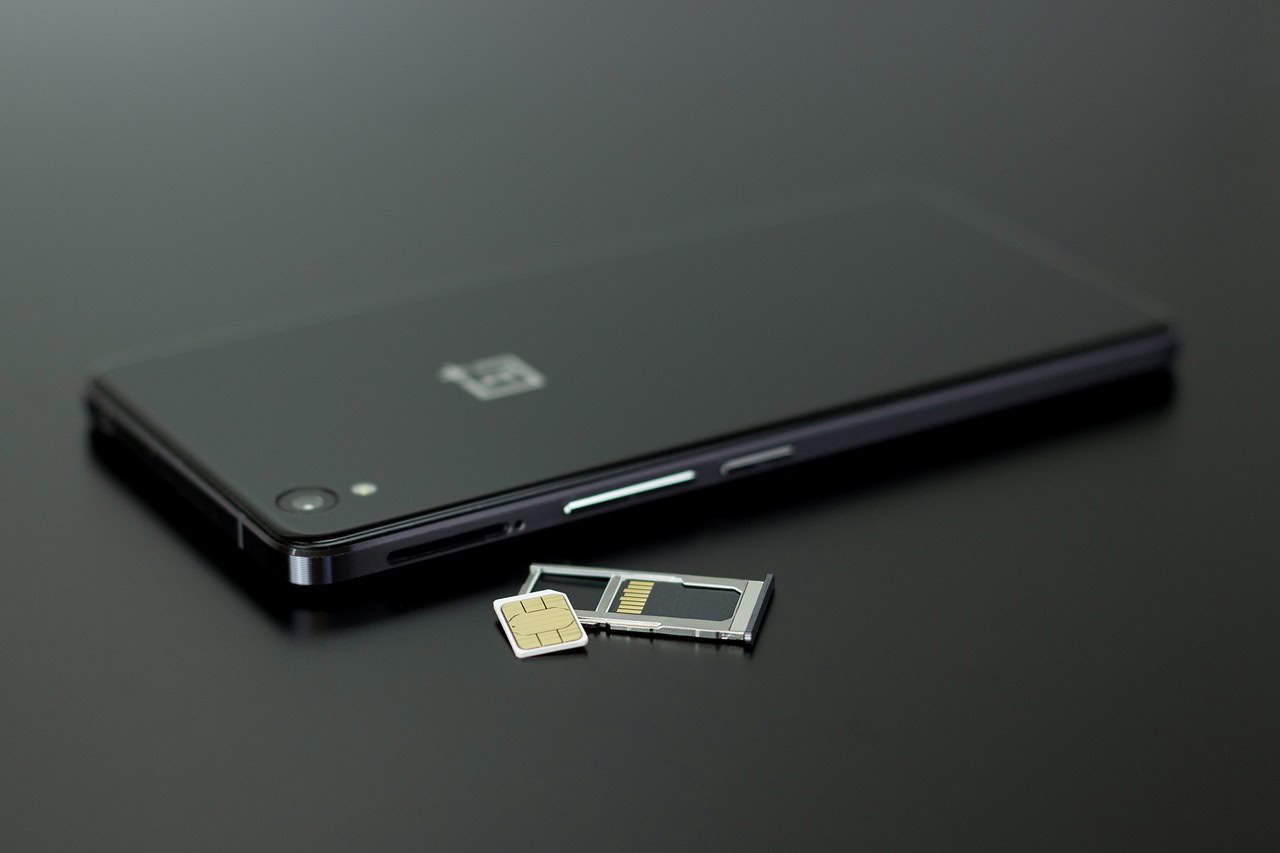Yes, you can put your SIM card into another phone and transfer the information stored on the card, such as your phone number, contacts, and text messages. Your phone number remains the same because it’s linked to the SIM card and mobile network, not the specific phone.
As long as your broken phone is still functioning, you should be able to transfer the data over to your new phone; but it’s important to realize that most data doesn’t transfer over just by transferring the SIM card. So you’ll get to keep your phone number and most likely keep using your phone company’s services without any issue, but you’ll need to move things over like your pictures, videos, apps, etc. using another process.
Before taking out the SIM card, it’s important to turn off the old phone to avoid losing or damaging any data. Most phones make it easy to get to the SIM card slot, which is usually near the battery or on the side of the phone. The only requirement is that the new phone needs to work with the old SIM card, and not be locked to a different phone company. Once you put the SIM card into the new phone, you should be able to make calls, send texts, and use data right away, using your existing number and plan.
Here are some steps you can follow to insert a SIM card into a new phone:
- Find the SIM card tray on the phone.
- Use a SIM card removal tool to press firmly on the tray and pop it out.
- Insert the new SIM card into the tray.
- Slide the tray back into the phone and push it in firmly.
- Turn the phone on.
Troubleshooting Your Broken Phone
Your phone is an essential tool, and a broken screen or other malfunction can disrupt your life. Thankfully, your phone number and valuable contact information are usually attached to your SIM card, not the phone itself. Here’s the breakdown of what to do when your phone breaks.
What is a SIM card?
- A SIM (Subscriber Identity Module) card is a tiny chip that stores your phone number, contact list, and other personal data provided through your mobile carrier.
- It’s what allows your phone to connect to a cellular network and be identified for calling, texting, and data usage.
Can I use my SIM card in another phone?
Yes, in most cases, you can put your old SIM card into a new or different phone with a few key considerations outlined in this table:
| Aspect | Considerations |
|---|---|
| Compatibility | Ensure the replacement phone is compatible with your network (e.g., Verizon, AT&T, T-Mobile). |
| Unlocked Status | Make sure the new device is unlocked. Phones bought directly from mobile carriers might be locked to their network for some time. |
| SIM Card Size | Check if your SIM card matches the size needed for the new device (standard, micro, or nano SIM). |
Steps to Transfer Your SIM Card
- Locate the SIM Card: Find the SIM card tray on your old and new phone. It’s often a small slot on the side with an ejector tool.
- Remove and Insert: Carefully remove the SIM card from the old phone and insert it into the tray of the new phone.
- Power On: Turn on your new phone. If compatible, the phone should automatically recognize the SIM card and connect to your network.
What if I need a different SIM card?
- Size Mismatch: If you need a different size SIM, your carrier store can usually provide a new SIM with your existing information.
- Lost SIM Card: Contact your carrier immediately if you can’t find your SIM card. They’ll issue a replacement to prevent unauthorized use.
Remember:
- Your text messages, photos, etc., are usually saved on your phone’s hard drive or linked to cloud storage. Be sure to back up your data before switching phones.
- You can often use the same SIM even when upgrading to a newer phone on the same network.
- Don’t hesitate to contact your carrier for assistance if needed.
Key Takeaways
- A SIM card transfer allows maintaining the same phone number.
- Transferring is as simple as switching the SIM to a compatible phone.
- Service continuity is generally assured with a successful transfer.
Preparing for SIM Card Transfer
When a phone breaks, transferring the SIM card to another device is a key step. It’s crucial to prepare properly to ensure a smooth transition. This involves checking compatibility, unlocking the phone if needed, and securing data.
Checking Device Compatibility
Before moving a SIM card to a new phone, one should confirm that the new device supports the SIM card format. Most modern phones use nano-SIM cards, but older models might require micro or standard sizes. If the new phone is an iPhone, it might also have the option to use an eSIM, which is a digital SIM that doesn’t require a physical card. It’s also important to make sure the network settings are compatible. For instance, a SIM card from a GSM network might not work in a device meant for a CDMA network.
Ensuring Phone Unlocked Status
If the phone to which the SIM is being transferred is locked to a specific carrier, it must be unlocked to accept a different SIM card. This can often be done by contacting the original carrier and requesting an unlock. They usually provide instructions on how to unlock the phone. An unlocked phone can use any network’s SIM card which offers flexibility.
Backing up Contacts and Data
It’s vital to back up any important information before transferring the SIM card. For iPhone users, syncing with an iCloud account ensures contacts, photos, and other data are secure. Android users can back up their data to a Google account or onto internal storage. If the phone is broken and the data is not already backed up, one might be unable to retrieve it unless cloud sync was active.
By following these steps, the transfer of a SIM card to a new phone can be completed with minimal disruption.
Transferring Your SIM Card
When a phone breaks, it’s important to know how to move the SIM card to a new phone. This allows the user to maintain their existing phone number and service without interruption. The transfer involves two key steps: taking the SIM card out of the current phone, and then placing it into the new one.
Removing the SIM Card from Your Current Phone
First, make sure the current phone is turned off. This ensures that no data is being transferred, which might pose a risk of corruption. The SIM card is located in a small tray which can be found either on the side of the phone or behind the battery cover. One can typically eject the SIM card tray by using a simple tool like a paperclip or a SIM card removal tool. Slide the tool into the tiny hole next to the tray. Apply gentle pressure until the tray pops out. Then, carefully remove the SIM card from the tray.
Inserting the SIM Card Into the New Phone
After removing the SIM card, the next step is to insert it into the new phone. Make sure the new phone is also turned off before starting. Locate the SIM card tray or slot on the new device. Slots vary by phone; some are on the side, and others are under the back cover or battery. Slide the SIM card into the tray or slot, ensuring that the notched corner aligns with the shape of the holder. The correct orientation is crucial to establish a connection with the mobile carrier’s network.
Activating Services on the New Device
Once the SIM card is securely in place, turn on the new phone. The device should recognize the SIM card and prompt for any additional setup steps. This process reconnects the subscriber identity to the network, restoring calls, messages, and mobile data services. If the phone does not recognize the SIM card, one should contact their mobile carrier for assistance. They can ensure the connection is active and often provide support remotely.
Frequently Asked Questions
Switching to a new phone can be straightforward when it involves transferring a SIM card. This section answers common questions related to this process, ensuring that users know exactly what to expect.
Will my mobile number remain the same if I insert my SIM into a new device?
When you move your SIM card to a new device, your mobile number will stay the same. The SIM holds your number and connects you to the mobile network.
Can I transfer all my information to a new phone by simply inserting my old SIM card?
A SIM card stores limited data such as your cell number, some contacts, and text messages. Most personal information like photos and apps are not stored on your SIM card.
What are the consequences of moving my SIM card to a different phone?
Moving your SIM to another phone will transfer your number and may enable calls and texts. Your other data remains on the old device unless backed up and restored separately.
Are there any compatibility concerns when placing my SIM card in a new or different smartphone?
Ensure the new smartphone is unlocked and supports the SIM card’s format. Also, check if the network type (GSM or CDMA) aligns with your SIM’s technology.
How does the transfer of a SIM card affect messaging apps, such as WhatsApp?
WhatsApp links to your phone number, so transferring a SIM might require you to verify the number again. Messages and app data should not be affected if backed up to your account.
If my phone is damaged, can I use my existing SIM card in a replacement phone without issues?
As long as the replacement phone is compatible, using your existing SIM card should not cause issues. Turn off both devices before transferring the SIM to be safe.







